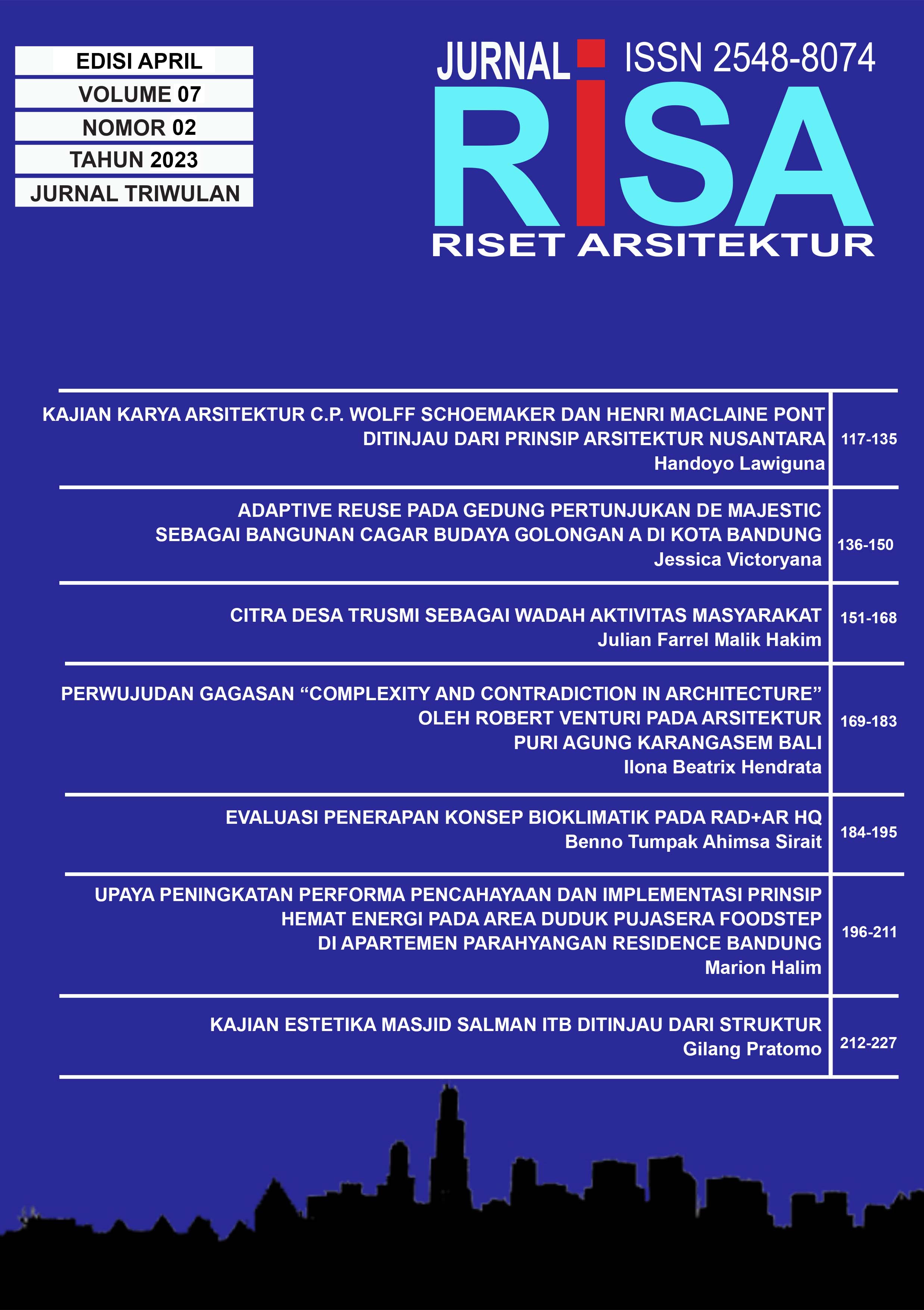STUDY OF THE ARCHITECTURAL WORKS OF C.P. WOLFF SCHOEMAKER AND HENRI MACLAINE PONT FROM THE PERSPECTIVE OF NUSANTARA ARCHITECTURE PRINCIPLES
DOI:
https://doi.org/10.26593/risa.v7i02.6600.117-135Abstract
Abstract - Charles Prosper Wolff Schoemaker and Henri Maclaine Pont are two Dutch Architects who worked in the Dutch East Indies in 1900 – 1940 period. In this period, architectural identity of Nusantara is being sought by some Dutch architects due to the development of new architectural thinking that involve localities. This thought arises because the old idea doesn’t fit with the geographical context, that the Dutch or “western” architectural thinking still dominating the design. Those two architects, Schoemaker and Pont are two figures that loud enough sounding their toughts and idealism about Nusantara architecutal identity until they often arguing at several forums and papers, initiating their own ideas for developing Nusantara architectural identity. Both are estimated use architectural approach of Nusantara but from two different perspective.
This research uses descriptive method with qualitative approach by describing objects from those figures and compare them with Nusantara architectural theories that written by Prof. Josef Prijotomo. Data collected by field observation and literature study. Data grouped by the variables, namely room order, structure – construction- materials, and building figure. Analysis technique are done with connecting data with Nusantara architectural theory and interpret with other theories that support the research for reading the Nusantara architecture at the objects.
The result of this research come to a conclusion, that in Schoemaker’s works, Nusantara architecture interpreted with functional and aesthetics approach, that the functional aspect linked with room comfort and the relation with local climate. The aesthetic aspect made by ornament that related with temple. Schoemaker’s design approach is modern – local, that come from modern thought and added some local elements. Contrasts with Schoemaker, Pont almost all local architecture thought applied in his buildings. Pont can read the local context until the root and learn the history, the culture, so that the architecture getting more contextual with the local nature, social, and culture. In his works, Pont almost applied Nusantara architectural theories in room order, structure – construction – materials, or the building figure so it can be concluded that Pont design approach is local – modern, developing and enrich local architecture with modern thought and technologies that can accompany and compelent Nusantara architecture.
Keywords: Nusantara architecture, Schoemaker, Pont, modern – local, local - modern
Additional Files
Published
Issue
Section
License
Copyright (c) 2023 Handoyo Lawiguna

This work is licensed under a Creative Commons Attribution-NonCommercial-ShareAlike 4.0 International License.












